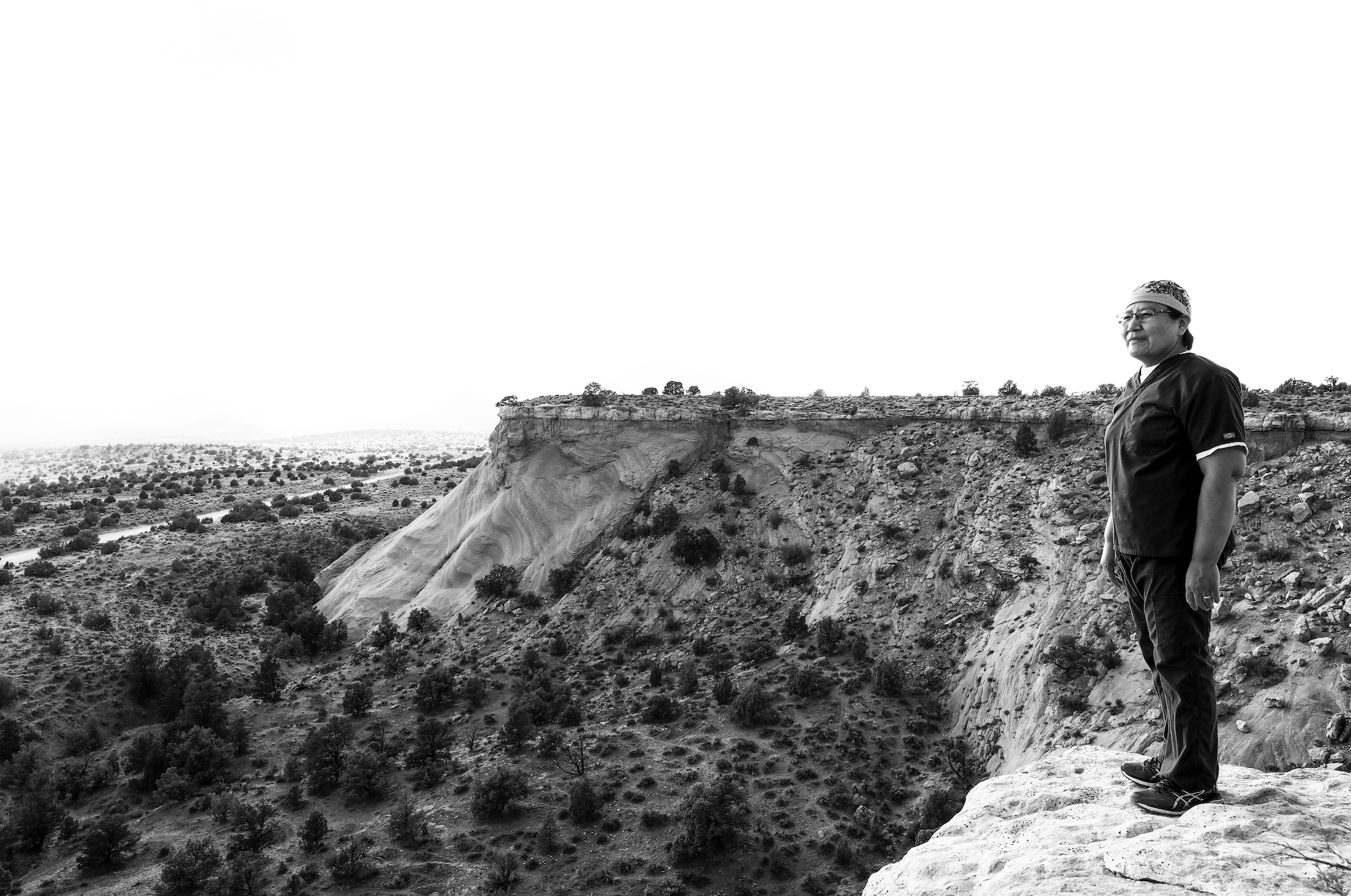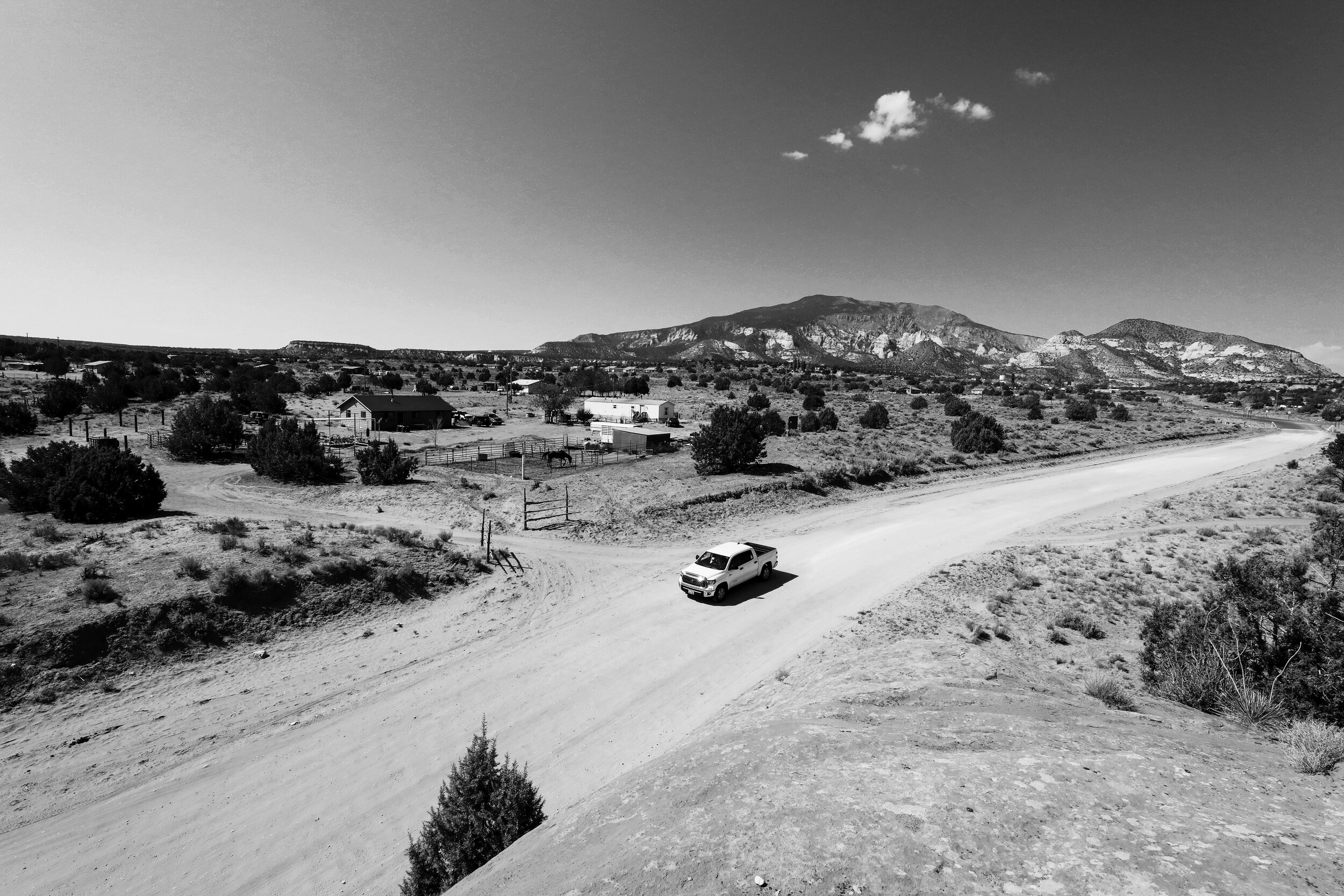
A Day in the Life
Revina Talker
Physician Assistant, Navajo Mountain Community Health Center
by Rich Polikoff
photos by Vance Jacobs
Growing up in the Navajo Nation, Revina Talker never saw any health care providers who were Navajo—nor any who spoke the Navajo language.
At a young age, Talker’s mother told her that she had to go to school so she could return and help her people. A graduate of the Utah Physician Assistant Program (UPAP), Talker is the clinic manager and sole provider at the Navajo Mountain Community Health Center in Tonalea, Utah. She also works in the ER of Gallup Indian Medical Center, a Level 3 hospital in Gallup,
New Mexico.
During the COVID-19 pandemic, one of the greatest challenges when treating Navajo patients has been overcoming the stigma of the disease—a stigma born of fear. In many cases, she says, it isn’t patients who come in for treatment; it’s concerned family members calling the clinic and asking if they can check in.
“It was scary for the community,” Talker said. “The tribe has really done a good job as far as explaining the COVID in Navajo, but people are hearing how bad it can be. If you get really bad, you get flown out to Flagstaff or Phoenix, you get on a respirator. So people are really afraid.”
After completing UPAP, Talker began working with Utah Navajo Health System in 2008. She was named Rural PA of the Year by the Utah Association of Physician Assistants in 2013.
Her ability to speak Navajo has always helped her better connect with patients—and it’s been particularly valuable when talking about something as scary as COVID-19. She says she can see patients become more at ease when she explains symptoms and treatments in their preferred language.
“In their own language, there’s a certain way to say it,” she said. “Especially with the elderly, I had to go in and translate for some of our docs. Being able to talk to them in Navajo, I think helped them feel more comfortable and willing to share more and explain themselves a little bit better because there’s different ways to say, ‘I feel sick.’ You have to ask them, ‘Well, what do you mean?’”
9:00 a.m. I start my day thinking about how we can better educate the community. It’s hard to reach some patients and impress upon them the seriousness of this pandemic.
10:00 a.m. We had this decontamination tent brought to our clinic so we could see patients outside of the clinic when the weather was warmer.
10:30 a.m. I take care of a patient within the tent. We have lost many elderly patients in Navajo Mountain to COVID.
11:00 a.m. Putting on PPE is absolutely critical. Despite all that is going on, we can’t let our guard down.
12:00 p.m. I see a mother and daughter together as patients, and am relieved to find that they do not have COVID-19.
1:00 p.m. My medical assistant, Sonya Slona, helps a patient to the sidewalk. Our parking lot is not paved, but we did get sidewalks recently. It’s one of our many challenges.
2:00 P.M. My family stops by to give me some relief and comfort. The drive to the clinic is two hours each way, every day.
3:00 p.m. I drive to make a home visit. We need trucks out here or 4x4’s; you can’t get around with regular cars. We recently acquired this truck for in-home visits and food deliveries.
4:00 p.m. I check in on one of our well-respected elders and medicine man who insists on living in a hogan, which is a traditional Navajo home.











